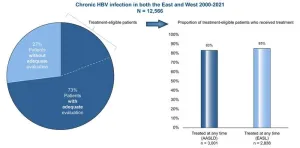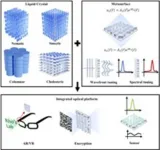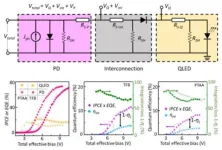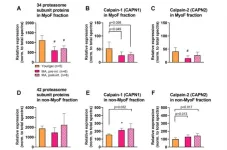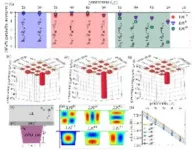(Press-News.org) University of Central Florida College of Medicine researcher Renee Fleeman is on a mission to kill drug-resistant bacteria, and her latest study has identified a therapy that can penetrate the slime that such infections use to protect themselves from antibiotics.
In a study published recently in Cell Reports Physical Science, Fleeman showed that an antimicrobial peptide from cows has potential for treating incurable infections from the bacterium Klebsiella pneumoniae. The bacteria, commonly found in the intestines, is usually harmless. It becomes a health hazard when it enters other parts of the body and can cause pneumonia, urinary tract and wound infections. Those at highest risk include seniors and patients with other health problems such as diabetes, cancer, kidney failure and liver disease. However, younger adults and people without additional health problems can acquire urinary tract and wound infections from the bacteria that cannot be treated by antibiotics available today.
The CDC reports that antibiotic resistant bacteria are a growing global health threat. A 2019 study found that nearly 5 million people died worldwide that year from drug-resistant infections. A large portion of those deaths are attributable to K. pneumoniae because it has a 50% death rate without antibiotic therapy.
These bacteria are more resistant to drugs when they live in a biofilm — microorganisms that stick together and are embedded in a protective slime. Recent studies have shown that 60-80% of infections are associated with bacteria biofilms, which increase their drug resistance.
“It’s Iike a coat that bacteria put around itself,” Fleeman says.
Her research is examining ways to remove the protective coat and expose the bacteria so it can be killed by the body’s immune system or antibiotics that currently cannot pass through the biofilm. Through that research, Fleeman discovered how the peptides made by cows can quickly kill K. pneumoniae.
She determined that the peptides interact with sugar connections that keep the slime intact. She likened the process to cutting into a chain-linked fence. Once multiple chains are cut, the integrity of the slime structure is damaged, and the peptide can enter and destroy the bacteria that are no longer protected.
“Our research has shown polyproline peptide can penetrate and begin to break the slime barrier down in as little as an hour after treatment,” says Fleeman.
The peptide has another advantage — once it breaks through the protective slime barrier, tests showed it killed the bacteria better than antibiotics used as a last resort to treat incurable infections. Peptides kill the bacteria by punching holes in their cell membrane, causing death quickly compared to other antibiotics that inhibit growth from inside the cell.
The peptide could also be used as a topical treatment for a wide range of uses, especially for the military, to treat open wounds in the field. “Bacteria divide every 30 minutes, so you have to act fast,” Fleeman says.
The next phase of her research will seek to understand the biology behind the peptide’s efficacy and if combinations of other drugs would aid in its application.
Her research is funded through a three-year National Institutes of Health funding Pathway to Independence R00 grant and is in its second year. Her study initially started as a K99 award at University of Texas at Austin, where she worked before joining UCF in September of 2022.
Fleeman says research into resistant infections must continue because they pose such a threat to health.
“It is estimated that by 2050, antibiotic resistant bacterial infections will be the number one cause of human deaths,” she says. “Our work is focused on preparing for this post-antibiotic era battle, where common antibiotics that we take for granted will no longer be effective, jeopardizing cancer therapy, organ transplants, and any modern medical advancement that relies on effective antibiotic therapies.”
END
Medical school scientist creates therapy to kill hypervirulent bacteria
An antimicrobial peptide from cows has potential for treating incurable infections from the bacteria commonly found in the intestines.
2024-05-02
ELSE PRESS RELEASES FROM THIS DATE:
New study supports psilocybin’s potential as an antidepressant
2024-05-02
Psilocybin - the active ingredient in “magic” mushrooms - is a more effective treatment for symptoms of depression than controls, providing further support for its potential as an antidepressant, suggests a study published by The BMJ today.
The researchers say the findings are encouraging but “further research is needed to clarify the factors that maximise psilocybin’s treatment potential for symptoms of depression.”
Depression affects an estimated 300 million ...
The Lancet Public Health: Global study reveals stark differences between females and males in major causes of disease burden, underscoring the need for gender-responsive approaches to health
2024-05-02
Global and regional analyses reveal persistent health differences between females and males across the 20 leading causes of disease burden (illness and death—quantified as health loss) over the past 30 years.
Overall, health loss is higher in males, particularly driven by premature death; but females, despite tending to live longer, endure higher levels of illness over their lives—underscoring the diverse and evolving health needs of men and women at different stages of their lives.
These health differences emerge in adolescence highlighting the importance of early interventions and measures to prevent the onset and exacerbation ...
Revealed: face of 75,000-year-old female Neanderthal from cave where species buried their dead
2024-05-02
A new Netflix documentary has recreated the face of a 75,000-year-old female Neanderthal whose flattened skull was discovered and rebuilt from hundreds of bone fragments by a team of archaeologists and conservators led by the University of Cambridge.
The team excavated the female Neanderthal in 2018 from inside a cave in Iraqi Kurdistan where the species had repeatedly returned to lay their dead to rest. The cave was made famous by work in the late 1950s that unearthed several Neanderthals which appeared ...
Hepatitis B is globally underassessed and undertreated, especially among women and Asian minorities in the West
2024-05-02
Amsterdam, May 2, 2024 – New evidence reveals global underassessment and undertreatment of chronic hepatitis B (HBV), especially among women and Asian minorities in the West, a new study in the Journal of Hepatology, published by Elsevier, details.
"In clinical practice we continue to see patients with advanced liver disease due to HBV despite having vaccines for prevention and excellent oral therapy for those who are treatment eligible. Simplifying and broadening HBV management is crucial," according to the researchers.
With the World Health Organization's goal to eliminate viral hepatitis by 2030 fast approaching, targeted outreach is needed to reduce new infections ...
Efficient stochastic parallel gradient descent training for on-chip optical processors
2024-05-01
A new publication from Opto-Electronic Advances; DOI 10.29026/oea.2024.230182 , discusses efficient stochastic parallel gradient descent training for on-chip optical processors.
With the explosive growth of global data volume, space-division multiplexing (SDM) technology has been emerged as a promising solution to enhance the communication capacity. Over the past few decades, SDM has been realized in few-mode fibers, multi-core fiber and free-space optical communication systems. However, all of above solutions face challenges of signal crosstalk because of the mixing between different channels during the ...
Liquid crystal-integrated metasurfaces for an active photonic platform
2024-05-01
A new publication from Opto-Electronic Advances; DOI 10.29026/oea.2024.230216 , discusses liquid crystal-integrated metasurfaces for an active photonic platform.
In the field of optical science, the exploration of metasurfaces has garnered significant attention over the last few decades. Metasurfaces represent a sophisticated evolution of traditional optical components, comprising nanostructures meticulously arranged to enable precise control over light manipulation. These nanostructures function as building blocks, allowing for the creation of lenses with unique ...
Unraveling the efficiency losses and improving methods in quantum dot-based infrared up-conversion photodetectors
2024-05-01
A new publication from Opto-Electronic Science; DOI 10.29026/oes.2024.230029 discusses unraveling the efficiency losses and improving methods in quantum dot-based infrared up-conversion photodetectors.
Traditional infrared imagers are usually constructed by bonding an infrared PD with each pixel of a thin film transistor (TFT)-based active-matrix backplane. A feasible way to avoid the costly pixilation is to use infrared up-conversion photodetector, in which an infrared photodetector (PD) and a light-emitting diode (LED) with large effective areas are back-to-back ...
A novel deep proteomic approach unveils molecular signatures affected by aging and resistance training
2024-05-01
“Resistance training can reverse certain aspects of skeletal muscle aging.”
BUFFALO, NY- May 1, 2024 – A new research paper was published in Aging (listed by MEDLINE/PubMed as "Aging (Albany NY)" and "Aging-US" by Web of Science) Volume 16, Issue 8, entitled, “A novel deep proteomic approach in human skeletal muscle unveils distinct molecular signatures affected by aging and resistance training.”
The skeletal muscle proteome alterations to aging and resistance training have been reported in prior studies. However, ...
High-intensity spatial-mode steerable frequency up-converter toward on-chip integration
2024-05-01
A new publication from Opto-Electronic Science; DOI 10.29026/oes.2024.230036 discusses high-intensity spatial-mode steerable frequency up-converter toward on-chip integration.
Integrated photonic devices consisting of micro-lasers, amplifiers, optical waveguides, frequency converters, and modulators on a single chip, enabling control over photon's spatial modes, frequencies, angular momenta, and phases, are essential for preparing high-dimensional quantum entangled states, high-capacity photon information processing, all-optical communication, and miniaturization of photonic computing. However, ...
Study indicates that cancer patients gain important benefits from genome-matched treatments
2024-05-01
In 2016, The Jackson Laboratory (JAX), a National Cancer Institute-designated Cancer Center and at the forefront of cancer research, launched the Maine Cancer Genomics Initiative (MCGI) to bring the latest progress in cancer care to rural Maine patients. Now, after successfully expanding access to genome tumor testing and targeted cancer treatments throughout Maine, the MCGI team provides compelling evidence that genome-matched treatments can provide significant patient benefit.
The MCGI report, published recently in npj Precision Oncology, ...
LAST 30 PRESS RELEASES:
Why are there so many Nordic mediators?
Young shark species more vulnerable to extinction
Mobile fetal heart monitoring linked to fewer newborn deaths in Tanzania
Bluey’s dad offered professorial chair in archaeology at Griffith University
Beyond small data limitations: Transfer learning-enabled framework for predicting mechanical properties of aluminum matrix composites
Unveiling non-thermal catalytic origin of direct current-promoted catalysis for energy-efficient transformation of greenhouse gases to valuable chemicals
Chronic breathlessness emerging as a hidden strain on hospitals
Paleontologists find first fossil bee nests made inside fossil bones
These fossils were the perfect home for ancient baby bees
Not everyone reads the room the same. A new study examines why.
New research identifies linked energy, immune and vascular changes in ME/CFS
Concurrent frailty + depression likely boost dementia risk in older people
Living in substandard housing linked to kids’ missed schooling and poor grades
Little awareness of medical + psychological complexities of steroid cream withdrawal
Eight in 10 trusts caring for emergency department patients in corridors, finds BMJ investigation
NASA’s Webb telescope finds bizarre atmosphere on a lemon-shaped exoplanet
The gut bacteria that put the brakes on weight gain in mice
Exploring how patients feel about AI transcription
Category ‘6’ tropical cyclone hot spots are growing
Video: Drivers struggle to multitask when using dashboard touch screens, study finds
SLU research shows surge in alcohol-related liver disease driving ‘deaths of despair’
Rising heat reshapes how microbes break down microplastics, new review finds
Roots reveal a hidden carbon pathway in maize plants
Membrane magic: FAMU-FSU researchers repurpose fuel cells membranes for new applications
UN Member States pledge to increase access to diagnosis and inhaled medicines for the 480 million people living with COPD
Combination therapy shows potential to treat pediatric brain cancer ATRT
Study links seabird nesting to shark turf wars in Hawai‘i
Legal sports betting linked to sharp increases in violent crime, study finds
Breakthrough AI from NYUAD speeds up discovery of life-supporting microbes
New Eva Mayr-Stihl Foundation funding initiative boosts research at University of Freiburg on adaptation of forests to global change
[Press-News.org] Medical school scientist creates therapy to kill hypervirulent bacteriaAn antimicrobial peptide from cows has potential for treating incurable infections from the bacteria commonly found in the intestines.




